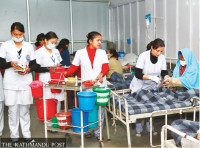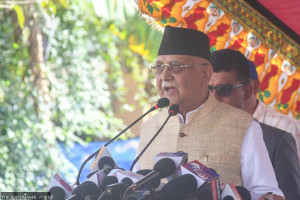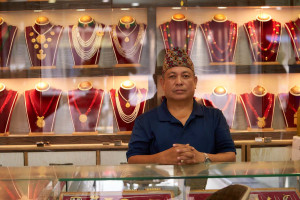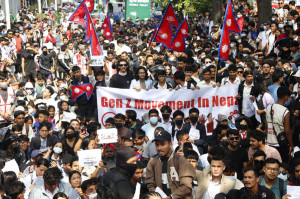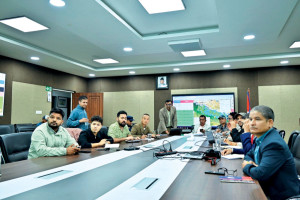Miscellaneous
Reconstruction works of heritage sites yet to begin
Even after seven months after the massive earthquake which destroyed the country’s prized heritage monuments, the government’s reconstruction plans have remained on paper only.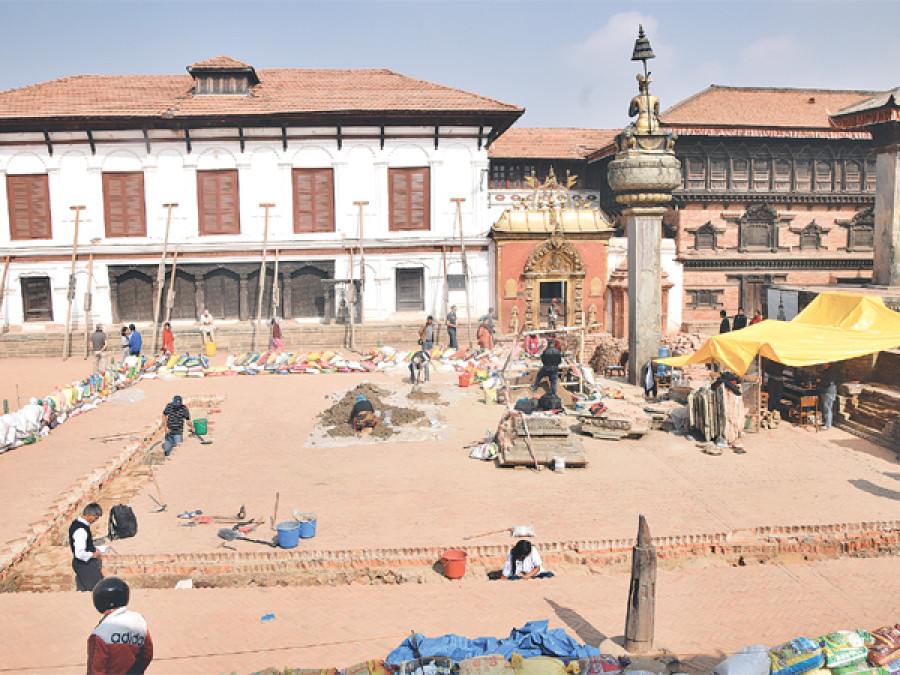
Gaurav Thapa
Even after seven months after the massive earthquake which destroyed the country’s prized heritage monuments, the government’s reconstruction plans have remained on paper only.
According to the Department of Archaeology, it is yet to receive any budget from the government for rebuilding the heritage sites.
DoA spokesperson Ram Bahadur Kunwar said that the National Planning Commission has asked the department to submit its reconstruction plan so that budget could be allocated for the same.
A total of 750 historical, cultural and religious monuments in 20 districts were damaged by the April 25 earthquake and its aftershocks.
Among them, 133 were completely destroyed while 617 were partially damaged.
The Post-Disaster Needs Assessment report prepared by NPC had estimated Rs20.56 billion for rebuilding the damaged monuments.
All of Valley’s seven sites, which were included in the World Heritage List in 1979 for their archaeological, historical, cultural and religious significance, sustained damage in the April 25 earthquake. Among them Swayambhunath Stupa, Changu Narayan Mandir and durbar squares of Kathmandu, Patan and Bhaktapur suffered considerable damage with many structures reduced to rubble.
The temple-filled durbar squares were major tourist destinations. As Nepal heavily relies on tourism, reconstruction of such heritage sites at the earliest could help boost tourism, experts say.
In a bid to woo back tourists, the three durbar squares, which date back as far as the 12th century, were reopened to the public in the second week of June, but the UN cultural agency had cautioned that the earthquake-damaged structures could pose a threat to visitors.
Experts have warned that ignoring such monuments which are of great archaeological significance could cost the country dear.
“Serious mistakes were made in the past when it came to our conservation efforts,” said Kosh Prasad Acharya, a heritage expert and former director general of DoA. “We lost so many monuments to the earthquake because of negligence on our part.”
The government in this year’s budget had allocated Rs 2billion for the reconstruction of archaeological structures, while a separate heritage fund was also envisioned for the purpose. But actual reconstruction work is yet to start.
Bulldozers and heavy excavators were used to clear the debris from the heritage sites, which experts say was a wrong move. Professor Robin Cunningham of Durham University, who was involved in excavation at the durbar squares, said the heavy machineries had further weakened other structures. Such modern interventions at archaeological sites pose serious risk to traditional designs, said Cunningham. Pipes and sewer lines were found while digging these archaeological sites, he added.
After seven months since the earthquake, DoA officials hope that reconstruction
work would begin shortly.
The department has completed all preparations, said the officials.
The department has made arrangements with other government agencies like the Kathmandu Valley Preservation Trust, Timber Corporation of Nepal, Kathmandu Metropolitan City among others, for procuring timber, crafted bricks and other materials for the reconstruction. DoA is also hiring and training civil engineers, architects, masons, carpenters and sculptors for the purpose.
Similarly, DoA has finished conducting an archaeological risk management map of the three durbar squares in the Kathmandu Valley.
After using ground penetrating radar equipment and overseeing several rounds of excavations, detailed layout of archaeological features of Patan, Bhaktapur and Kathmandu durbar squares have been prepared, according to DoA.
Preliminary findings of the survey show that several structures like Kasthamandap in Basantapur and Char Narayan Mandir in Patan have solid foundations which can be reused while some temples like Batsala Devi in Bhaktapur have suffered major design flaws.
Compared to other structures, Boudhanath Stupa and Pashupatinath Temple suffered had remained largely intact.




 23.12°C Kathmandu
23.12°C Kathmandu




